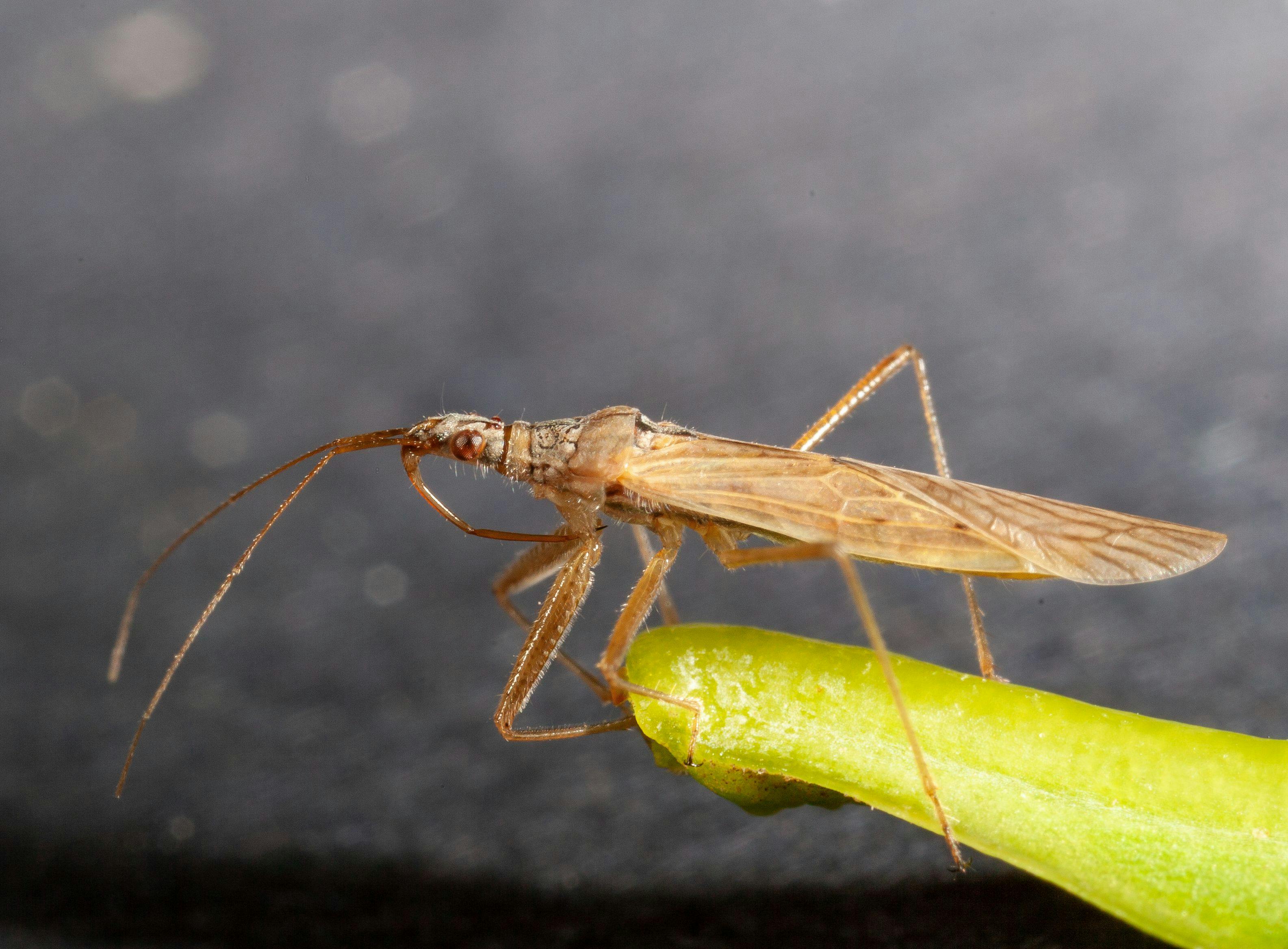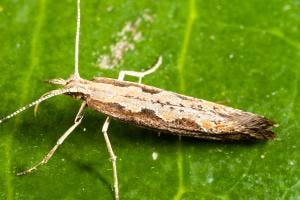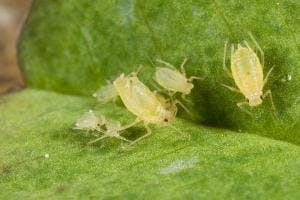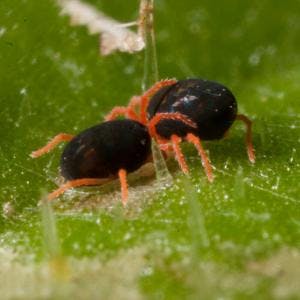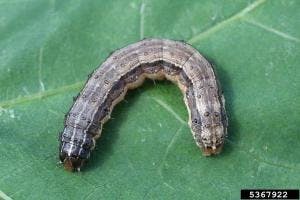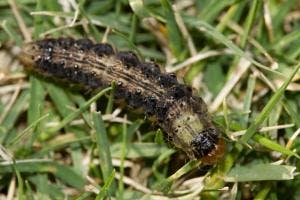Summary
Predatory bugs belong to the family Hemiptera or true bugs. This group includes many pest insects, but there are also many important beneficial insects. Some species are quite small, measuring a few millimeters in length, while others can be several centimeters long.
Predatory bugs are a diverse group made of many different species, but there are some common identifiable characteristics. They have an elongated body varying in shape from flattened to cylindrical, with well developed legs adapted for capturing and holding onto prey. Their forewings are partially hardened at the base and membranous at the tip, forming a protective shield when at rest. They possess specialized mouthparts for piercing and sucking, using a long stylet to feed on prey fluids.

There are several agriculturally important predatory bugs.
Minute Pirate Bugs (Orius sp.)
Minute pirate bugs, measuring around 2.5 mm in length, are common in crops. They have black, oval and slightly flattened bodies with light wing patches, wide heads, bulging red eyes, and prominent antennae. These bugs are most active in early spring. Minute pirate bugs are one of the first predaceous insects to begin feeding early in the growing season.
Bigeyed Bugs (Geocoridae sp.)
Adults are brown or black in colour, and range from 3-5 mm in length. Adults have a triangular head with large, prominent eyes that occasionally extend over the back.
Damsel Bugs (Nabis sp.)
Adult damsel bugs are typically 8-12 mm in length and have a slender, soft-bodied structure compared to other true bugs. They feature a narrow head with prominent bulging eyes and long antennae. These brown-colored predators have strong forelegs designed for grasping prey.
Assassin Bugs (Reduviidae sp.)
Adult assassin bugs exhibit a size range of 4-40 mm and display a variety of colors, including brown, black, red, or orange. They are characterized by their elongated heads, slender necks, beady eyes, and hinged, needlelike mouthparts. The tip of their beak fits into a groove on their thorax, producing a distinctive sound when rubbed against ridges.
Predatory Shield/Stink Bugs (Pentatomidae sp.)
They are larger in size, typically measuring 8-20 mm in length, and have broader bodies compared to other true bugs. Their body shape is shield-like, displaying a flattened and somewhat triangular or pentagonal form. At rest, their wings form a characteristic X-shaped pattern. The coloration of shield bugs encompasses a range of brown, green, and gray hues for effective camouflage in their environments.
Diet
Predatory bugs are general predators, preying on soft-bodied insects and eggs including caterpillars, moth eggs, aphids, leafhoppers, mites and mirids. They may also feed on other beneficial species.
Some species of predatory bugs can be omnivorous. In situations where there is a scarcity of prey or when the population of predatory bugs is relatively high, these bugs may resort to feeding on plant tissue as an alternative food source.
Pests Attacked*
*with pesticide resistance
Monitoring guidelines
Regular visual inspections of crops can help identify predatory bugs, but little evidence of predatory bug activity is visible in the field.
Adults and nymphs can be found on the beat sheet and in sweep net samples.
Sweep net: Hold the handle of the sweep net and make sweeping motions through crop. Move the net back and forth in a semi-circular or figure-eight pattern to capture insects present in the vegetation.
Beat sheet: A sheet between 1.3-1.5 m wide by 1.5-2.0 m deep, made of yellow or white tarpaulin with a sturdy stick attached to each end. To use it, place one edge of the sheet at the base of the plants in the row you want to check. Hang the other end over the adjacent row or against the base of the next row for wider spacings. Hold the stick at both ends and shake the plants vigorously 5-10 times to dislodge insects onto the sheet. This process should be repeated at four different non-consecutive lengths of row within a 20-meter radius.
Habitat management
Predatory bugs are relatively common and most can be found in a range of agricultural systems.
Creating diverse habitats with hedgerows, cover crops, brushpiles and wildflower strips can support generalist predator population, by providing additional food sources, nesting sites, and protection from pesticide exposure or extreme weather conditions.
Excessive use of pesticides can be detrimental to predatory bug populations and their effectiveness as biological control agents. Consider adopting integrated pest management (IPM) practices, which involve using pesticides judiciously and as a last resort. Targeted application of pesticides, avoiding broad-spectrum ones, and selecting insecticides that have minimal impact on non-target organisms can help preserve predatory bug populations.
While predatory bugs offer numerous benefits, their impact can vary depending on local species composition, farm management practices, and regional factors.
Chemical toxicity
To assist growers and advisors in making informed choices around insecticide use in Australian grain crops, the below table summarises the toxicity of foliar chemical sprays on predatory bugs.
The impact ratings in the table are colour-coded, indicating the level of impact on beneficial insects. The colour scheme is as follows:
- Green: low impact (<30% mortality)
- Yellow: moderate impact (30-79% mortality)
- Orange: high impact (80-99% mortality)
- Red: very high impact (>99% mortality)
Data shown here is directly from the Beneficials Chemical Toxicity Table.
Ratings for toxicity are based on International Organisation for Biological Control (IOBC) protocols for laboratory studies and reflect percent mortality of insects.
These values represent mortality under controlled laboratory conditions – impacts may vary in the field, especially if multiple applications of a chemical occur.
